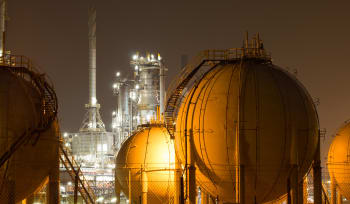This informal CPD article ‘Safety Cases in the Oil and Gas Industry’, was provided by Synergen Oil and Gas UK, an independent engineering consultancy specialising in Process Safety, Technical Risk Management and Operational Safety services.
Operating within the oil and gas industry entails substantial risks, making safety a top priority. Safety cases play a crucial role in mitigating these risks and providing a comprehensive framework for effectively navigating hazards. In this article, we will explore the significance of safety cases, their components, and their benefits in ensuring the safety of workers and the environment.
What is a Safety Case?
A safety case is a detailed document that outlines the management of risks and safety measures in the oil and gas industry. Its primary purpose is to identify and assess hazards, control and manage risks, ensure regulatory compliance, and instil confidence among stakeholders. To achieve these objectives, a safety case typically includes the following components:
1) Hazard Identification
The first step in developing a safety case involves identifying potential hazards that may arise within the operations of the oil and gas industry. Common hazards include fires, explosions, natural disasters, safety risks to workers, and human-made incidents.
2) Risk Assessment
Once hazards are identified, a thorough risk assessment is conducted to evaluate the likelihood and consequences of these hazards. This assessment enables companies to prioritize and allocate resources to address the most significant risks.
3) Risk Management and Control Measures
After identifying and assessing risks, appropriate control measures are implemented to mitigate these risks. This may include implementing safety procedures and protocols, providing training to workers, conducting regular inspections and maintenance, and using safety equipment.
4) Safety Management Systems
Safety management systems play a pivotal role in maintaining and enhancing safety practices within the industry. These systems define the organizational structure, responsibilities, processes, and procedures necessary to manage safety effectively.
5) Emergency Preparedness and Response Plans
To respond swiftly and effectively to emergencies, safety cases include well-defined emergency preparedness and response plans. These plans outline procedures for evacuations, communication protocols, and strategies for containing incidents to minimize their impact.
6) Performance Monitoring and Review
Safety cases emphasize the importance of regularly monitoring and reviewing the performance of safety measures. This enables companies to identify areas for improvement, assess the effectiveness of control measures, and adapt their safety practices to emerging risks.
7) Continuous Improvement
Safety cases encourage a culture of continuous improvement, promoting the refinement of safety practices through ongoing evaluation, learning from incidents, and implementing innovative solutions.














